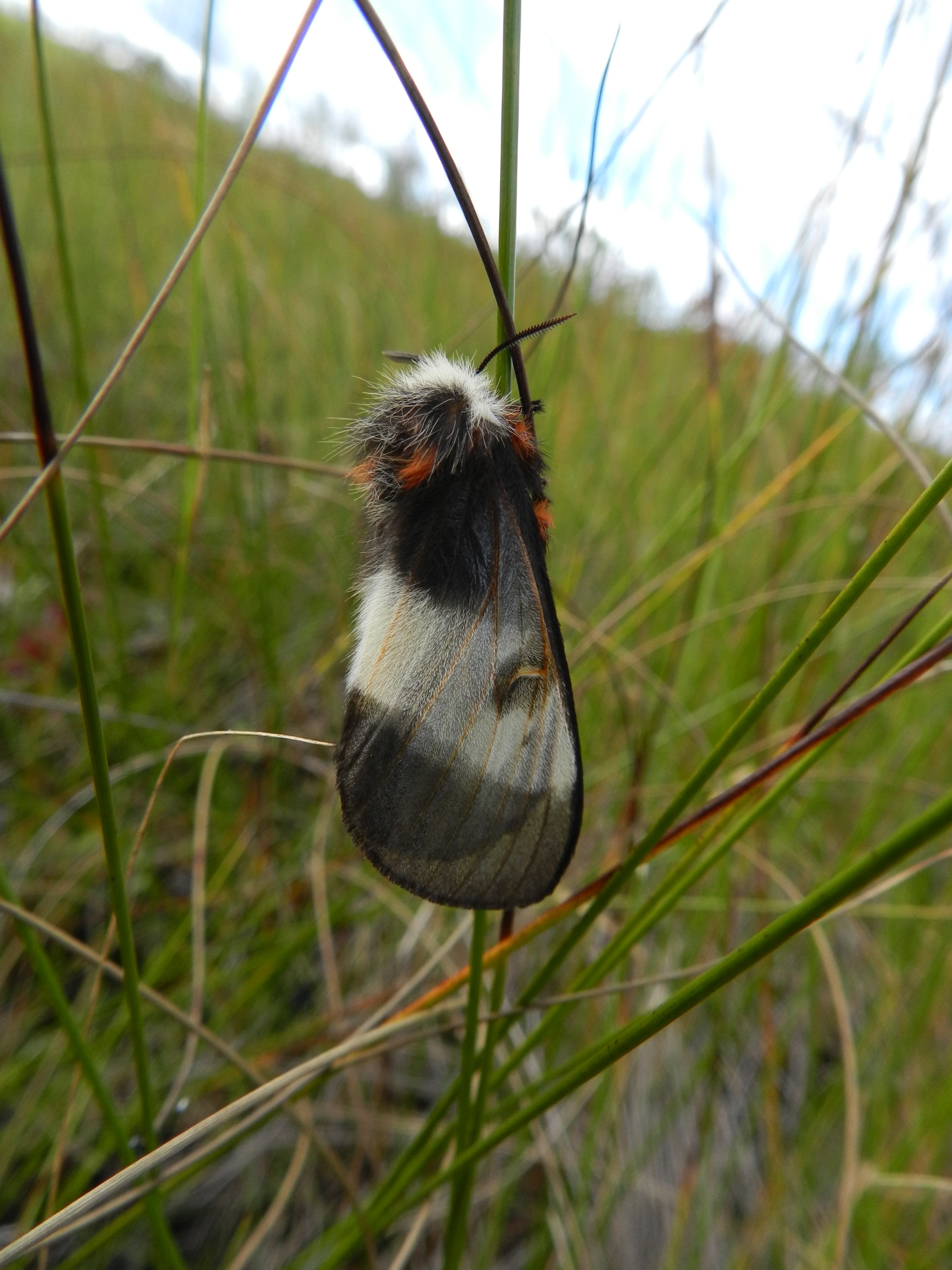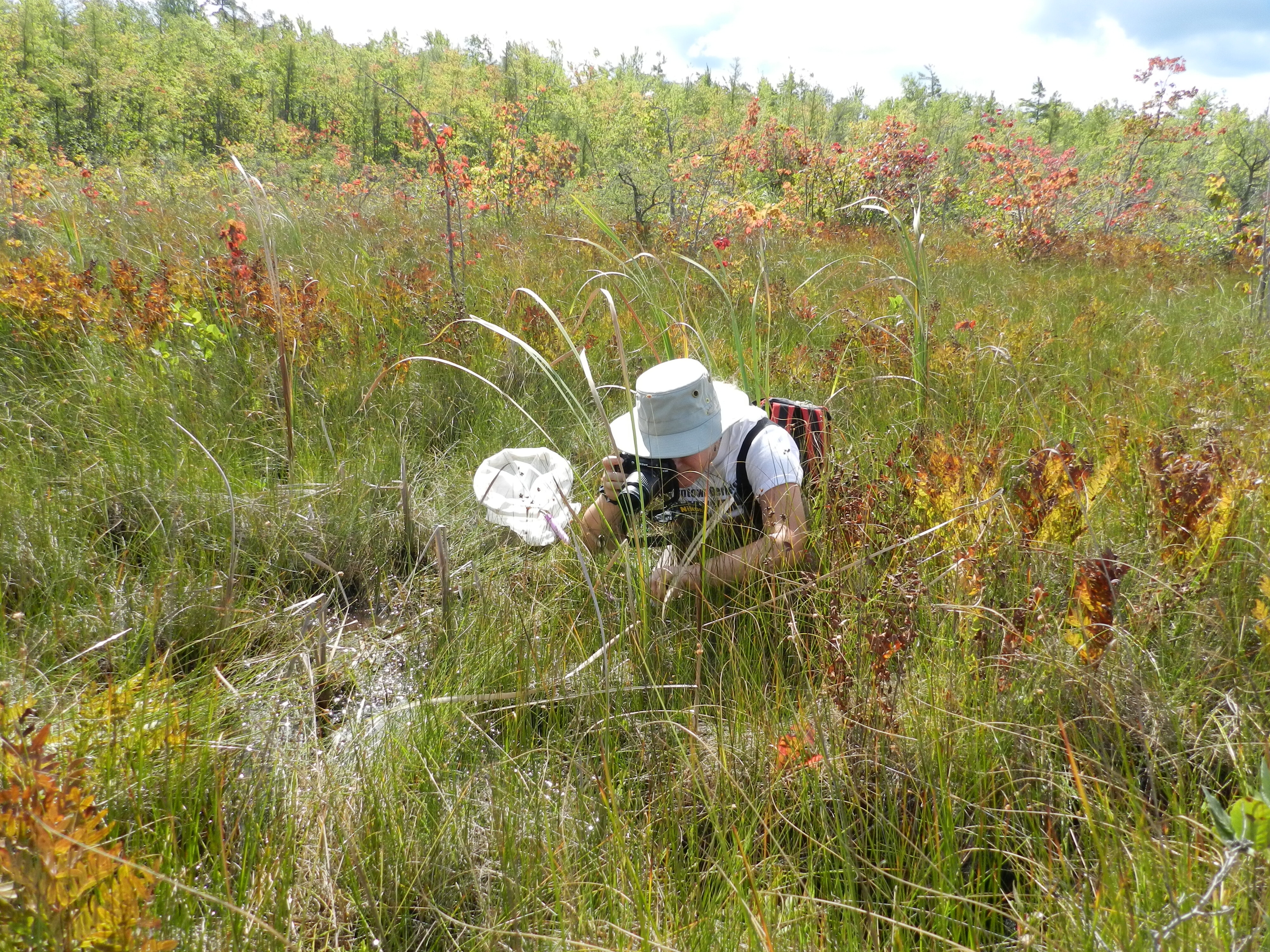Following DNA research by Dupuis (2018, 2020), Pavulaan (2020) described the northern NY populations as Hemileuca maia menyanthevora. Note that Dupuis demonstrated that it's not a ssp of maia, but very much a distinct species.
This population- low density localized populations across less than a dozen sites in NY and Ontario CA- has been long recognized as "different" and protected by NYS and Ontario.
Whatever the taxonomic status, two days ago USFWS listed Hemileuca maia menyanthevora under the Endangered Species Act. Hemileuca maia menyanthevora Read here, it's quite long and detailed https://www.govinfo.gov/content/pkg/FR- ... -05012.pdf
Hemileuca menyanthevora listed with Endangered Species
Re: Hemileuca menyanthevora listed with Endangered Species
I visited one of the Hemileuca sites in 2012. This population is now extirpated. At the time, genetic analysis was not developed sufficiently to differentiate the NY/ON populations from H. maia.
NYS placed all NY Hemileuca under protection because NYDEC has broad authority to do so; and, since at the time they were "just" H. maia, they could protect these populations as H. maia. Federally, USFWS has extremely stringent rules concerning covering species under Endangered Species Act, they can't just "do it" like so many other US laws. For years, many dedicated researchers wanted federal protection of these moths, but it was impossible because they were just H. maia, which is widespread and locally common- and, the early genetics as I said were limited by technology so scientific data actually worked against protection of the moths. It took some 20 years of dedication by concerned researchers, plus technology, to finally give USFWS what was needed to separate the NY/ ON moths from H. maia, and then for USFWS to the rest of the extensive work to demonstrate it should be protected under ESA. If you read the USFWS listing linked above, and then dig up all the supporting documentation, it becomes clear the immense volume of work USFWS (and others) had to do in order to list H. m. menyantherova under ESA- it really gave me an appreciation for one circumstance under which the burden of proof can be forced on government, and the dedication of those who worked on all facets of saving this species- read the documents and you'll see names of scientists and researchers like Sime, Bonanno, Tuttle, Peigler, Pavulaan, and Dupuis.
Anyway, here are some photos from 2012:
Female, awaiting a male. FYI in my observation the males are so inept at both flight and finding females, it's amazing that they've survived this long.

Dr. Karen Sime, photographing a now-H. m. menyantherova. Note that this is a bog, a floating mass which can support small trees. When one walks it's like a trampoline (until one leg goes through.) Aside from the bounce of the "ground" you'd never know you were floating on water.

The ESA listing of this ssp., like many things, comes with surprises, both ultimately coming down to FOLLOW THE MONEY.
I was first aware that menyantherova had been listed in the local online news, the Outdoors section of NYup.com. In the article, the only person quoted was Tamara Strobel, staff scientist with Center for Biological Diversity. Who? What organization? I've read every publication on these moths, and some of the internal-only studies and reports, and I've never heard of Ms. Strobel nor CBD. So I looked them up. CBD is what I'd call a borderline-ECO terrorist organization. Ms. Strobel, who AFAIK has never been cited in any publications or reports on this moth, has a masters degree in entomology (most professionals I know have PhDs.) I did find Ms. Strobel had submitted a comment to USFWS during the comment period, and rambled on about global warming and boilerplate habitat issues. Nowhere did Ms. Strobel (whom I question if she's even visited where the moth occurs) mention anything about IJC (more on this.) Why the author of the Outdoor section of NYup.com cited her, rather than somebody who's been involved with this project for 20 years, I have no idea, except it's just another case of the dumbing-down of journalism. Funny part is, whether by accident or intentional (I suspect the latter) in the ruling USFWS makes it crystal clear why they did NOT designate Critical Habitat, as Ms. Strobel requested- pretty much "You're wrong".
The second element of this could get real interesting. USFWS cites factors contributing to the decline of this moth to include high water in Lake Ontario, and specifically calls out- several times- IJC. IJC is the joint commission established to control the levels and fluctuation of Lake Ontario, and is responsible for Plan 2014 which is widely blamed for extensive lakeshore flooding (where some of these moth populations reside) in 2017 and 2019. IJC of course is just a political front to satisfy greenies while at the same time (and more importantly) unsure that cargo ship traffic can navigate Lake Ontario and the St. Lawrence River. Thus far, victims of millions of dollars in flood damage haven't been able to force IJC to do anything, they just get a big FU. Listing this lakeshore species on ESA though has the potential to pit federal ESA against NY state politics. I can't wait.
Well, thanks for reading. I hope it was interesting.
NYS placed all NY Hemileuca under protection because NYDEC has broad authority to do so; and, since at the time they were "just" H. maia, they could protect these populations as H. maia. Federally, USFWS has extremely stringent rules concerning covering species under Endangered Species Act, they can't just "do it" like so many other US laws. For years, many dedicated researchers wanted federal protection of these moths, but it was impossible because they were just H. maia, which is widespread and locally common- and, the early genetics as I said were limited by technology so scientific data actually worked against protection of the moths. It took some 20 years of dedication by concerned researchers, plus technology, to finally give USFWS what was needed to separate the NY/ ON moths from H. maia, and then for USFWS to the rest of the extensive work to demonstrate it should be protected under ESA. If you read the USFWS listing linked above, and then dig up all the supporting documentation, it becomes clear the immense volume of work USFWS (and others) had to do in order to list H. m. menyantherova under ESA- it really gave me an appreciation for one circumstance under which the burden of proof can be forced on government, and the dedication of those who worked on all facets of saving this species- read the documents and you'll see names of scientists and researchers like Sime, Bonanno, Tuttle, Peigler, Pavulaan, and Dupuis.
Anyway, here are some photos from 2012:
Female, awaiting a male. FYI in my observation the males are so inept at both flight and finding females, it's amazing that they've survived this long.

Dr. Karen Sime, photographing a now-H. m. menyantherova. Note that this is a bog, a floating mass which can support small trees. When one walks it's like a trampoline (until one leg goes through.) Aside from the bounce of the "ground" you'd never know you were floating on water.

The ESA listing of this ssp., like many things, comes with surprises, both ultimately coming down to FOLLOW THE MONEY.
I was first aware that menyantherova had been listed in the local online news, the Outdoors section of NYup.com. In the article, the only person quoted was Tamara Strobel, staff scientist with Center for Biological Diversity. Who? What organization? I've read every publication on these moths, and some of the internal-only studies and reports, and I've never heard of Ms. Strobel nor CBD. So I looked them up. CBD is what I'd call a borderline-ECO terrorist organization. Ms. Strobel, who AFAIK has never been cited in any publications or reports on this moth, has a masters degree in entomology (most professionals I know have PhDs.) I did find Ms. Strobel had submitted a comment to USFWS during the comment period, and rambled on about global warming and boilerplate habitat issues. Nowhere did Ms. Strobel (whom I question if she's even visited where the moth occurs) mention anything about IJC (more on this.) Why the author of the Outdoor section of NYup.com cited her, rather than somebody who's been involved with this project for 20 years, I have no idea, except it's just another case of the dumbing-down of journalism. Funny part is, whether by accident or intentional (I suspect the latter) in the ruling USFWS makes it crystal clear why they did NOT designate Critical Habitat, as Ms. Strobel requested- pretty much "You're wrong".
The second element of this could get real interesting. USFWS cites factors contributing to the decline of this moth to include high water in Lake Ontario, and specifically calls out- several times- IJC. IJC is the joint commission established to control the levels and fluctuation of Lake Ontario, and is responsible for Plan 2014 which is widely blamed for extensive lakeshore flooding (where some of these moth populations reside) in 2017 and 2019. IJC of course is just a political front to satisfy greenies while at the same time (and more importantly) unsure that cargo ship traffic can navigate Lake Ontario and the St. Lawrence River. Thus far, victims of millions of dollars in flood damage haven't been able to force IJC to do anything, they just get a big FU. Listing this lakeshore species on ESA though has the potential to pit federal ESA against NY state politics. I can't wait.
Well, thanks for reading. I hope it was interesting.
Create an account or sign in to join the discussion
You need to be a member in order to post a reply
Create an account
Not a member? register to join our community
Members can start their own topics & subscribe to topics
It’s free and only takes a minute


